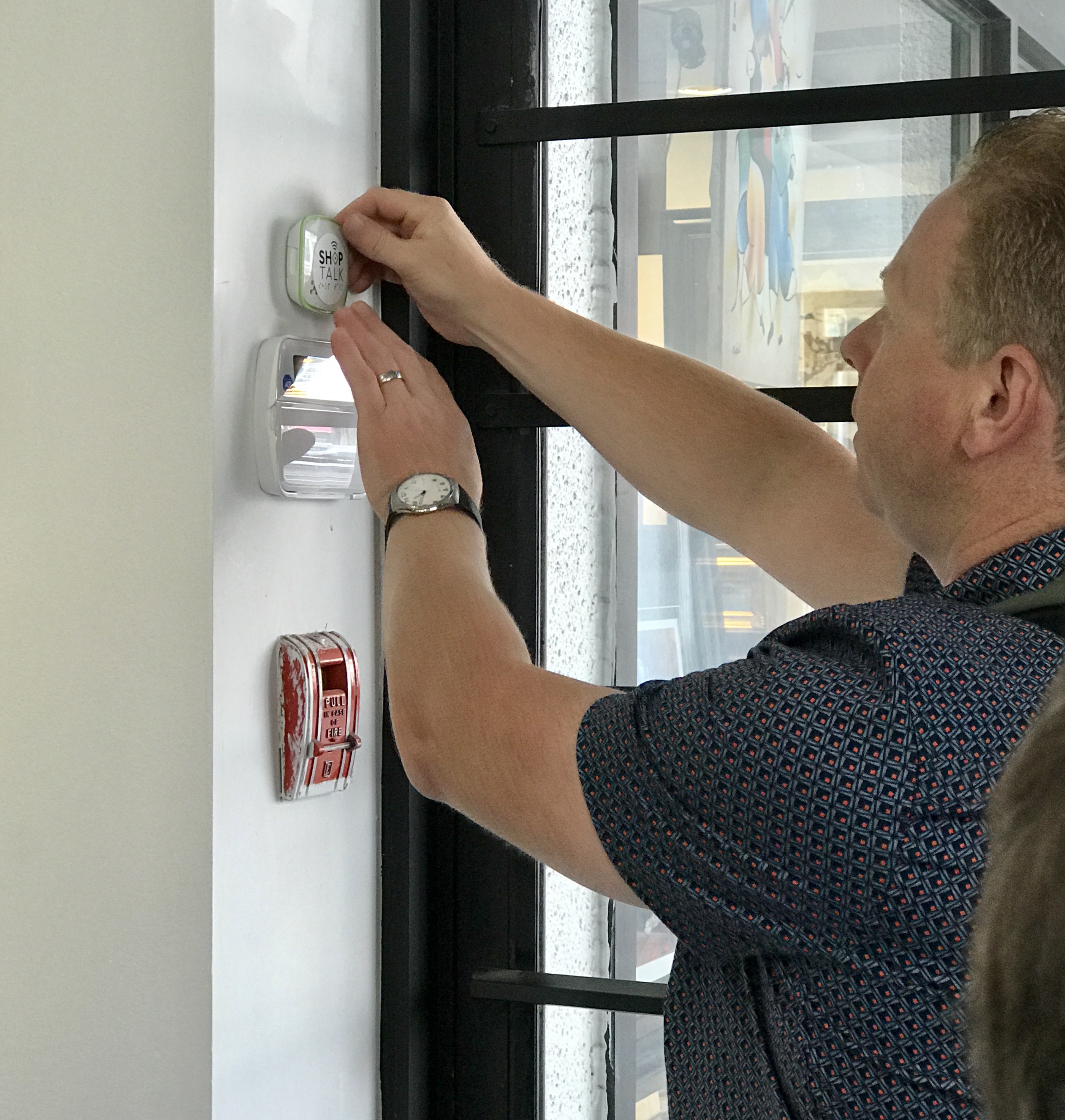Toronto’s New Auditory ‘Beacons’ Will Help Blind People Navigate Downtown
Credit to Author: Alison Motluk| Date: Tue, 12 Sep 2017 12:00:00 +0000
For most of us, a coffee run is a simple affair. You can see the shop’s name in writing outside, you can see the door leading inside, and you can see the counter where you place your order. For the blind, however, it is less straightforward.
For years, visually-impaired people have been fighting to have that information made available some other way, and finally, it’s beginning to happen.
Over the next four months, two hundred “beacons” are being installed in venues throughout Toronto’s upscale Yonge-and-St. Clair neighbourhood to make it easier for blind people to navigate the city. Cafes, churches, shoe stores, fitness centres, and wine shops are all participating free of charge, thanks to a grant from the nonprofit Rick Hansen Foundation. About 20 establishments have been equipped with the devices so far.

The beacons are commercially available battery-powered transmitters that look a lot like small smoke alarms, and, like alarms, can be fixed discreetly on ceilings. They transmit auditory information about the place you’re in front of, and, if you turn towards one, the message will guide you inside to a counter where someone can assist you. They work by transmitting a unique ID number, and unique message, to an app called BlindSquare, which picks it up and transforms it into speech that the user can then hear through a set of headphones.
In a wintry country like Canada, for instance, there are often two sets of doors to keep the cold air out, which the beacon message will alert you to. Those doors could open outward or inward. Maybe the left door is more directly in line with the service counter—in which case, the message will tell you so.
This is just the beginning, said Debbie Gillespie, an accessibility specialist with the CNIB (formerly known as the Canadian National Institute for the Blind), who is personally mapping out the participating spaces and typing up the messages. Secondary messages, with additional detail, which a blind user can access by shaking her phone, can be added later.
Gillespie told me that she envisions a world studded with beacons, helping people find everything from the button panel inside an elevator to the shampoo aisle in the drugstore. She wants beacons in airports, shopping malls, universities, and hospitals.
Transmission—known as “advertising” in beacon lingo—is by a silent, non-intrusive radio signal, like a Bluetooth headset. Made by the Polish company Kontakt.io, the brand they are using retails for about $35 a piece.
Each beacon’s unique ID is “advertised” about three times per second. The ID is associated with a location-specific message, and when the signal is picked up by BlindSquare, the message is automatically delivered.
Created by Finnish inventor Ilkka Pirttimaa, this app allows people to hear voiced descriptions of what is around them. Outdoors, BlindSquare taps into open source navigation tools like OpenStreetMap to identify points of interest, then uses a synthesized voice to alert blind people to them.
BlindSquare will announce, if you want, what intersection you are crossing or what popular cafes are nearby. (Users can customize what they want to know about.) The app, which only works on iOS devices so far, speaks in 22 languages, including German, French, Spanish and Arabic.
The app can broadcast out loud, but for privacy, many people use headsets. Many choose to wear bone conduction headphones, which transmit sound vibrations through your skull bones directly to the inner ear, so their ears aren’t blocked, and headsets with hand controls, so they don’t have to fiddle directly with their phones.
BlindSquare works outdoors, where there is GPS, but indoors, that’s not available. Hence the beacons.
Read More: Self-Driving Cars Should Be Designed For People with Disabilities
For just over a year, CNIB has been testing out 35 beacons inside its headquarters. Now the organization wants to try it out in a less familiar, real-world setting. The neighbourhood around the Yonge and St. Clair intersection was chosen because the storefronts are relatively close to the street and have a fairly consistent setback. Only users will be able to say whether it’s a success.
“If I brought someone here from another country,” said Gillespie, “they should be able to navigate independently in the space.”
Get six of our favorite Motherboard stories every day by signing up for our newsletter.